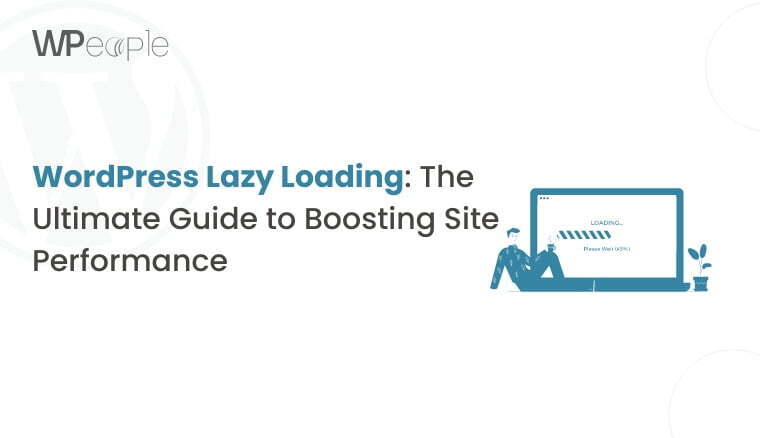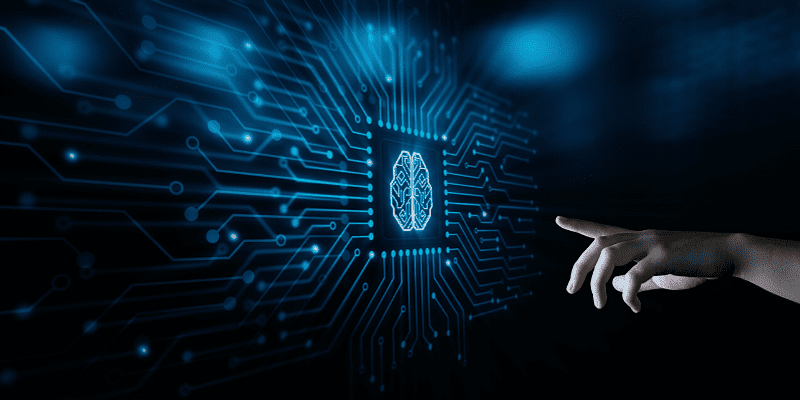How AI is Revolutionizing Renewable Energy Grids: A Developer’s Guide to Sustainable Tech
Introduction: The Intersection of AI and Renewable Energy As developers, we’re at the forefront of building technologies that shape a sustainable future. One of the most exciting trends in 2025 is how Artificial Intelligence (AI) is transforming renewable energy grids, making them more efficient, reliable, and scalable. With the renewable energy market projected to grow from USD 1.34 trillion in 2024 to USD 5.62 trillion by 2033 (Nova One Advisor), AI is becoming a game-changer in tackling the intermittency of solar and wind power. In this article, I’ll dive into how AI optimizes energy grids, share real-world examples, and explore how we, as developers, can contribute to this revolution using tools like Python and TensorFlow. Let’s build a cleaner future together! Follow me on X for more AI insights: @codewithsurajj Why Renewable Energy Grids Need AI Renewable energy sources like solar and wind are inherently variable—think of a cloudy day reducing solar output or unpredictable wind speeds affecting turbine performance. Traditional grids, built for stable fossil fuel inputs, struggle to balance supply and demand with these fluctuations. This intermittency can lead to outages, inefficiencies, and wasted energy. AI addresses these challenges by enabling predictive analytics, real-time optimization, and smarter grid management. According to the International Energy Agency (IEA), AI could reduce global energy demand by up to 10% by 2040 through efficiency gains (IEA). Let’s explore how AI makes this possible. How AI Enhances Renewable Energy Grids Predictive Maintenance: Reducing Downtime AI’s ability to predict maintenance needs is a game-changer for renewable energy infrastructure. By analyzing sensor data from wind turbines or solar panels, AI can identify potential failures before they happen. Example: Siemens Energy uses AI to monitor wind farms, reducing downtime by up to 70% and extending equipment lifespan (Deloitte). As developers, we can build similar systems using Python libraries like scikit-learn for anomaly detection or TensorFlow for predictive modeling. Imagine creating an AI model that alerts technicians to a failing turbine blade—saving time, money, and energy! Boosting Efficiency in Energy Production AI optimizes energy production at the source. In solar farms, AI algorithms adjust panel angles to track sunlight, maximizing output. Example: Google’s DeepMind improved solar energy efficiency by 20% through smart tracking systems (DeepMind). In wind farms, AI analyzes weather patterns and turbine performance to fine-tune operations. Example: Vestas uses AI to predict wind patterns and optimize turbine performance (Vestas). As developers, we can leverage tools like pandas for data analysis and Keras for building neural networks to predict optimal settings, making renewable energy more competitive. Grid Optimization: Balancing Supply and Demand At the grid level, AI forecasts energy production and consumption with high accuracy, enabling better load balancing. Example: Tesla’s Autobidder platform uses AI to manage battery storage, participating in electricity markets to stabilize grids (Tesla). This ensures that excess solar energy generated during the day is stored and used during peak demand, reducing waste. Developers can contribute by building AI models with PyTorch to predict energy demand or using APIs like the OpenWeather API to integrate weather data into grid management systems. The adoption of AI in the energy sector is growing at 24.6% annually (Research and Markets). Real-World Examples of AI in Action Here are some inspiring projects: Denmark (Vestas): Vestas uses AI to optimize wind turbine performance, increasing energy output and reducing maintenance costs (Vestas). France (EDF): EDF leverages AI to manage hydroelectric plants, optimizing water usage for efficient power generation (EDF). Google Nest: Google’s Nest Thermostat uses AI to adjust home energy usage, saving up to 15% on energy bills (Google Nest). These examples show how AI can be applied across different renewable energy domains, from wind to hydro to consumer devices. As developers, we can draw inspiration to create similar solutions—perhaps using Python to build a smart thermostat prototype or a wind prediction model. A Developer’s Toolkit for Building AI Energy Solutions Here’s how you can get started: Python Libraries: Use scikit-learn for predictive maintenance, TensorFlow or PyTorch for neural networks, and pandas for data analysis. APIs: Integrate weather data with the OpenWeather API or energy data with the EIA API to enhance your models. Live Demos: Build a live demo on Replit, like an AI-powered energy predictor. > Example: AI Energy Predictor Demo (replace with your actual demo link after building). Code

Introduction: The Intersection of AI and Renewable Energy
As developers, we’re at the forefront of building technologies that shape a sustainable future. One of the most exciting trends in 2025 is how Artificial Intelligence (AI) is transforming renewable energy grids, making them more efficient, reliable, and scalable.
With the renewable energy market projected to grow from USD 1.34 trillion in 2024 to USD 5.62 trillion by 2033 (Nova One Advisor), AI is becoming a game-changer in tackling the intermittency of solar and wind power.
In this article, I’ll dive into how AI optimizes energy grids, share real-world examples, and explore how we, as developers, can contribute to this revolution using tools like Python and TensorFlow.
Let’s build a cleaner future together!
Follow me on X for more AI insights: @codewithsurajj
Why Renewable Energy Grids Need AI
Renewable energy sources like solar and wind are inherently variable—think of a cloudy day reducing solar output or unpredictable wind speeds affecting turbine performance.
Traditional grids, built for stable fossil fuel inputs, struggle to balance supply and demand with these fluctuations. This intermittency can lead to outages, inefficiencies, and wasted energy.
AI addresses these challenges by enabling predictive analytics, real-time optimization, and smarter grid management.
According to the International Energy Agency (IEA), AI could reduce global energy demand by up to 10% by 2040 through efficiency gains (IEA).
Let’s explore how AI makes this possible.
How AI Enhances Renewable Energy Grids
Predictive Maintenance: Reducing Downtime
AI’s ability to predict maintenance needs is a game-changer for renewable energy infrastructure.
By analyzing sensor data from wind turbines or solar panels, AI can identify potential failures before they happen.
Example: Siemens Energy uses AI to monitor wind farms, reducing downtime by up to 70% and extending equipment lifespan (Deloitte).
As developers, we can build similar systems using Python libraries like scikit-learn for anomaly detection or TensorFlow for predictive modeling.
Imagine creating an AI model that alerts technicians to a failing turbine blade—saving time, money, and energy!
Boosting Efficiency in Energy Production
AI optimizes energy production at the source.
In solar farms, AI algorithms adjust panel angles to track sunlight, maximizing output.
Example: Google’s DeepMind improved solar energy efficiency by 20% through smart tracking systems (DeepMind).
In wind farms, AI analyzes weather patterns and turbine performance to fine-tune operations.
Example: Vestas uses AI to predict wind patterns and optimize turbine performance (Vestas).
As developers, we can leverage tools like pandas for data analysis and Keras for building neural networks to predict optimal settings, making renewable energy more competitive.
Grid Optimization: Balancing Supply and Demand
At the grid level, AI forecasts energy production and consumption with high accuracy, enabling better load balancing.
Example: Tesla’s Autobidder platform uses AI to manage battery storage, participating in electricity markets to stabilize grids (Tesla).
This ensures that excess solar energy generated during the day is stored and used during peak demand, reducing waste.
Developers can contribute by building AI models with PyTorch to predict energy demand or using APIs like the OpenWeather API to integrate weather data into grid management systems.
The adoption of AI in the energy sector is growing at 24.6% annually (Research and Markets).
Real-World Examples of AI in Action
Here are some inspiring projects:
- Denmark (Vestas): Vestas uses AI to optimize wind turbine performance, increasing energy output and reducing maintenance costs (Vestas).
- France (EDF): EDF leverages AI to manage hydroelectric plants, optimizing water usage for efficient power generation (EDF).
- Google Nest: Google’s Nest Thermostat uses AI to adjust home energy usage, saving up to 15% on energy bills (Google Nest).
These examples show how AI can be applied across different renewable energy domains, from wind to hydro to consumer devices.
As developers, we can draw inspiration to create similar solutions—perhaps using Python to build a smart thermostat prototype or a wind prediction model.
A Developer’s Toolkit for Building AI Energy Solutions
Here’s how you can get started:
- Python Libraries: Use scikit-learn for predictive maintenance, TensorFlow or PyTorch for neural networks, and pandas for data analysis.
- APIs: Integrate weather data with the OpenWeather API or energy data with the EIA API to enhance your models.
- Live Demos: Build a live demo on Replit, like an AI-powered energy predictor. > Example: AI Energy Predictor Demo (replace with your actual demo link after building).
Code Snippet: Predict Energy Output
import pandas as pd
from sklearn.linear_model import LinearRegression
from sklearn.model_selection import train_test_split
## Sample data: solar panel output based on sunlight hours
data = {'sunlight_hours': [5, 6, 7, 8, 9], 'energy_output': [20, 24, 28, 32, 36]}
df = pd.DataFrame(data)
### Train model
X = df[['sunlight_hours']]
y = df['energy_output']
X_train, X_test, y_train, y_test = train_test_split(X, y, test_size=0.2, random_state=42)
model = LinearRegression()
model.fit(X_train, y_train)
### Predict
prediction = model.predict([[7]]) # Predict energy output for 7 sunlight hours
print(f"Predicted energy output: {prediction[0]} kWh")
Try this code and share your results on X!, I’d love to see your projects: @codewithsurajj
Challenges and Considerations
While AI offers immense potential, there are hurdles:
- Data Security: AI systems require vast amounts of data, raising concerns about privacy and cybersecurity (World Economic Forum).
- High Costs: Initial investments in AI infrastructure can be significant, though long-term savings often justify the expense.
- Talent Shortages: There’s a growing demand for skilled AI developers in the energy sector, creating opportunities for us to fill the gap.
Addressing these challenges will require collaboration between developers, policymakers, and industry leaders to ensure AI’s benefits are fully realized.
The Future of AI in Renewable Energy
Looking ahead, AI’s role in renewable energy will only grow.
The IEA predicts that AI could reduce global energy demand by 10% by 2040 through efficiency gains, helping us achieve net-zero emissions (IEA).
We might see AI-driven microgrids that power entire communities or AI systems that optimize energy storage on a global scale.
As developers, we have a unique opportunity to lead this change by building innovative tools and applications.
Let’s code for a sustainable future!
3 Key Statistics: AI’s Impact on Renewable Energy
| Aspect | Statistic | Source |
|---|---|---|
| Market Growth | USD 1.34T (2024) to USD 5.62T (2033) | Nova One Advisor |
| Solar Investment | Surpassed $500B in 2024 | IEA |
| Efficiency Boost (Solar) | 20% improvement | DeepMind |
| Downtime Reduction | Up to 70% | Deloitte |
| AI Adoption Growth Rate | 24.6% annually | Research and Markets |
These stats highlight AI’s transformative potential, making it a hot topic for developers and energy professionals alike.
Conclusion: Let’s Build a Sustainable Future Together
AI is revolutionizing renewable energy grids, from predictive maintenance to grid optimization, and developers like us have a critical role to play.
By leveraging tools like Python, TensorFlow, and APIs, we can build solutions that make renewable energy more efficient and accessible.
I’m passionate about this intersection of AI and sustainability, and I’d love to connect with you on X to share more ideas: @codewithsurajj
What’s your favorite AI tool for energy projects?
Drop a comment below or join the conversation on X using AI WebDev Sustainability!
Tags
,AI ,WebDev ,Sustainability ,Python ,Programming ,MachineLearning ,CodeNewbie ,RenewableEnergy, TechForGood


































































































































































![[The AI Show Episode 143]: ChatGPT Revenue Surge, New AGI Timelines, Amazon’s AI Agent, Claude for Education, Model Context Protocol & LLMs Pass the Turing Test](https://www.marketingaiinstitute.com/hubfs/ep%20143%20cover.png)






























































































































![[DEALS] Koofr Cloud Storage: Lifetime Subscription (1TB) (80% off) & Other Deals Up To 98% Off – Offers End Soon!](https://www.javacodegeeks.com/wp-content/uploads/2012/12/jcg-logo.jpg)






















![Is this too much for a modular monolith system? [closed]](https://i.sstatic.net/pYL1nsfg.png)



















































































































_roibu_Alamy.jpg?width=1280&auto=webp&quality=80&disable=upscale#)














































































































![M4 MacBook Air Drops to Just $849 - Act Fast! [Lowest Price Ever]](https://www.iclarified.com/images/news/97140/97140/97140-640.jpg)
![Apple Smart Glasses Not Close to Being Ready as Meta Targets 2025 [Gurman]](https://www.iclarified.com/images/news/97139/97139/97139-640.jpg)
![iPadOS 19 May Introduce Menu Bar, iOS 19 to Support External Displays [Rumor]](https://www.iclarified.com/images/news/97137/97137/97137-640.jpg)



































































































